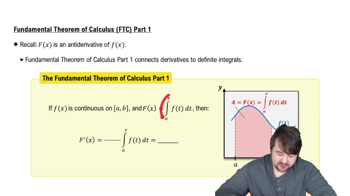Roots (Zeros)
Show that the functions in Exercises 19–26 have exactly one zero in the given interval.
f(x) = x⁴ + 3x + 1, [−2, −1]
 Verified step by step guidance
Verified step by step guidance Verified video answer for a similar problem:
Verified video answer for a similar problem:



 5:53m
5:53mMaster Finding Differentials with a bite sized video explanation from Patrick
Start learning